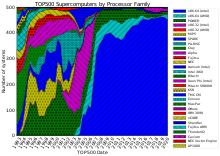x86 Assembly/Introduction

Why Learn Assembly?
[edit | edit source]Assembly is among some of the oldest tools in a computer-programmer's toolbox. Nowadays though, entire software projects can be written without ever looking at a single line of assembly code. So this pops up the question: why learn assembly? Assembly language is one of the closest forms of communication that humans can engage in with a computer. With assembly, the programmer can precisely track the flow of data and execution in a program in a mostly human-readable form. Once a program has been compiled, it is difficult (and at times, nearly impossible) to reverse-engineer the code into its original form. As a result, if you wish to examine a program that is already compiled but would rather not stare at hexadecimal or binary, you will need to examine it in assembly language. Since debuggers will frequently only show program code in assembly language, this provides one of many benefits for learning the language.
Assembly language is also the preferred tool, if not the only tool, for implementing some low-level tasks, such as bootloaders and low-level kernel components. Code written in assembly has less overhead than code written in high-level languages, so assembly code frequently will run much faster than equivalent programs written in other languages. Also, code that is written in a high-level language can be compiled into assembly and "hand optimized" to squeeze every last bit of speed out of it. As hardware manufacturers such as Intel and AMD add new features and new instructions to their processors, often times the only way to access those features is to use assembly routines. That is, at least until the major compiler vendors add support for those features.
Developing a program in assembly can be a very time consuming process, however. While it might not be a good idea to write new projects in assembly language, it is certainly valuable to know a little bit about it.
Who is This Book For?
[edit | edit source]This book will serve as an introduction to assembly language and a good resource for people who already know about the topic, but need some more information on x86 system architecture. It will also describe some of the more advanced uses of x86 assembly language. All readers are encouraged to read (and contribute to) this book, although prior knowledge of programming fundamentals would definitely be beneficial.
How is This Book Organized?
[edit | edit source]The first section will discuss the x86 family of chips and introduce the basic instruction set. The second section will explain the differences between the syntax of different assemblers. The third section will go over some of the additional instruction sets available, including the floating point, MMX, and SSE operations.
The fourth section will cover some advanced topics in x86 assembly, including some low-level programming tasks such as writing bootloaders. There are many tasks that cannot be easily implemented in a higher-level language such as C or C++. For example, enabling and disabling interrupts, enabling protected mode, accessing the Control Registers, creating a Global Descriptor Table, and other tasks all need to be handled in assembly. The fourth section will also deal with interfacing assembly language with C and other high-level languages. Once a function is written in assembly (a function to enable protected mode, for instance), we can interface that function to a larger, C-based (or even C++ based) kernel. The fifth section will discuss the standard x86 chipset, cover the basic x86 computer architecture, and generally deal with the hardware side of things.
The current layout of the book is designed to give readers as much information as they need without going overboard. Readers who want to learn assembly language on a given assembler only need to read the first section and the chapter in the second section that directly relates to their assembler. Programmers looking to implement the MMX or SSE instructions for different algorithms only really need to read section 3. Programmers looking to implement bootloaders, kernels, or other low-level tasks, can read section 4. People who really want to get to the nitty-gritty of the x86 hardware design can continue reading on through section 5.